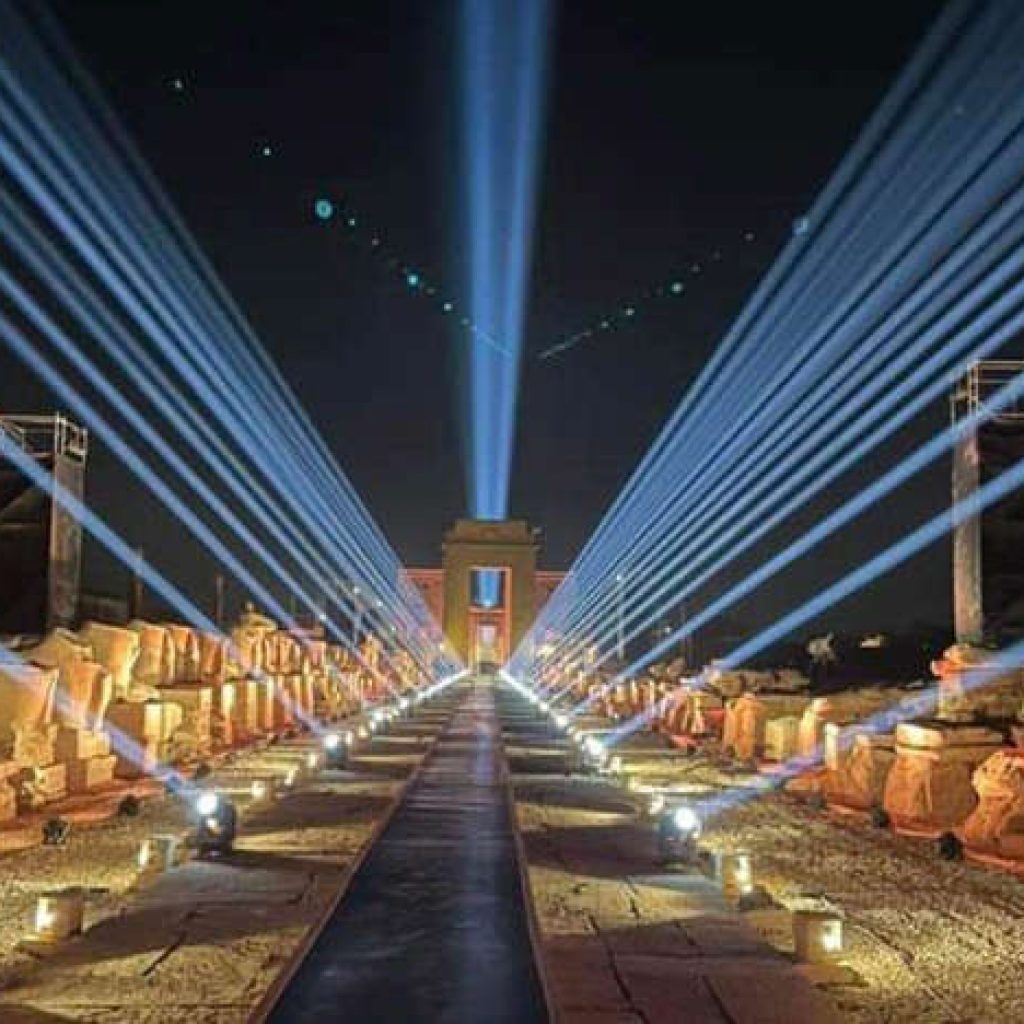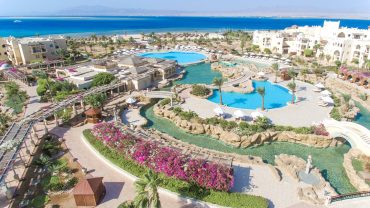The King’s Festivities Road or Rams Road is 1.7 mile long and about 250 feet wide avenue, which connects Karnak Temple with Luxor Temple, have been uncovered in the ancient city of Thebes, with sphinxes and ram-headed statues lined up on both flanks.

Construction of the Rams Road began during the New Kingdom and was completed during the reign of the Thirtieth Dynasty ruler Nectanebo I (380-362 BC), but the road was buried under layers of sand over the centuries.
The first trace of the road was found in 1949 when Egyptian archaeologist Zakaria Ghoneim unearthed eight statues near Luxor Temple, with another 17 excavated from 1958 to 1961 and 55 excavated from 1961 to 1964 – all within a circumference of 250 metres.
From 1984 to 2000, the entire walkway route was finally determined.
The Rams Road consisted of a stone pavement in the middle along the road, lined with about 1,300 statues in the form of a full ram, a ram’s head on a lion’s body, and a human’s head on a lion’s body. The Rams Road connects the most important monuments in Luxor. Its statues were carved from sandstone. The road extends from Karnak Temple to Luxor Temple with a length of 2,700 meters.
A road used by the ancient Egyptians to celebrate a famous feast known to the ancient Egyptians as (The Opet Festival), in which the boats of Amun moved from the Holy of Holies at Karnak Temple to Luxor Temple
The celebration took place in the summer, with the beginning of the flood season, and this visit lasted for 27 days, during which he transformed during this period from the well-known form, to him, and he is in the form of a human with two feathers on his head, to another form, why did they accept my name?
Amun Min O (Amun Ka Mut F)
The celebration included the boats of Amon, his wife and his son
According to the beliefs of the ancient Egyptian, carried on the shoulders of the priests, preceded by the procession of the king and his entourage, and senior officials, the king’s men
As well as the media campaign on the sounds of drums. and loud music
q majestic procession
The ancient Egyptian depicted this celebration in all its details on the walls of Luxor Temple
The sacrifices are sacrificed and presented as offerings in front of these boats in the Luxor Temple
Finally, the three boats return again to Karnak Temple

of the original 1,057 statues on the way, which are divided into three forms:
The first figure is a lion’s body with a ram’s head erected on an area of approximately 1,000 feet between the Karnak temple and the area of death during the reign of the ruler of the New Kingdom, Tutankhamun.
The second figure is a full ram statue, built in a remote area during the reign of the Eighteenth Dynasty of Amenhotep III before it was later transferred to the Karnak complex.
The third figure, which includes the largest part of the statues is a statue of the Sphinx (body of a lion and head of a human), the statues extend over a mile to Luxor Temple.





Comment (0)